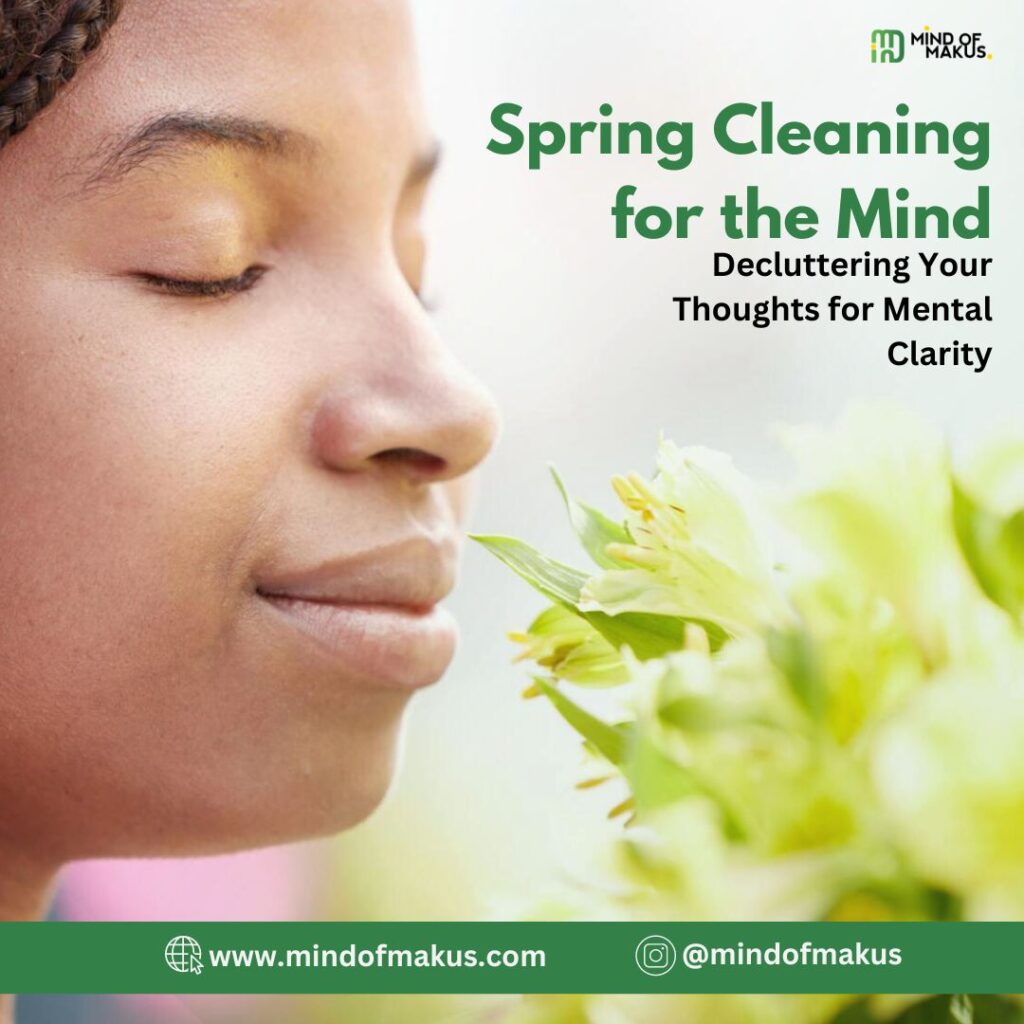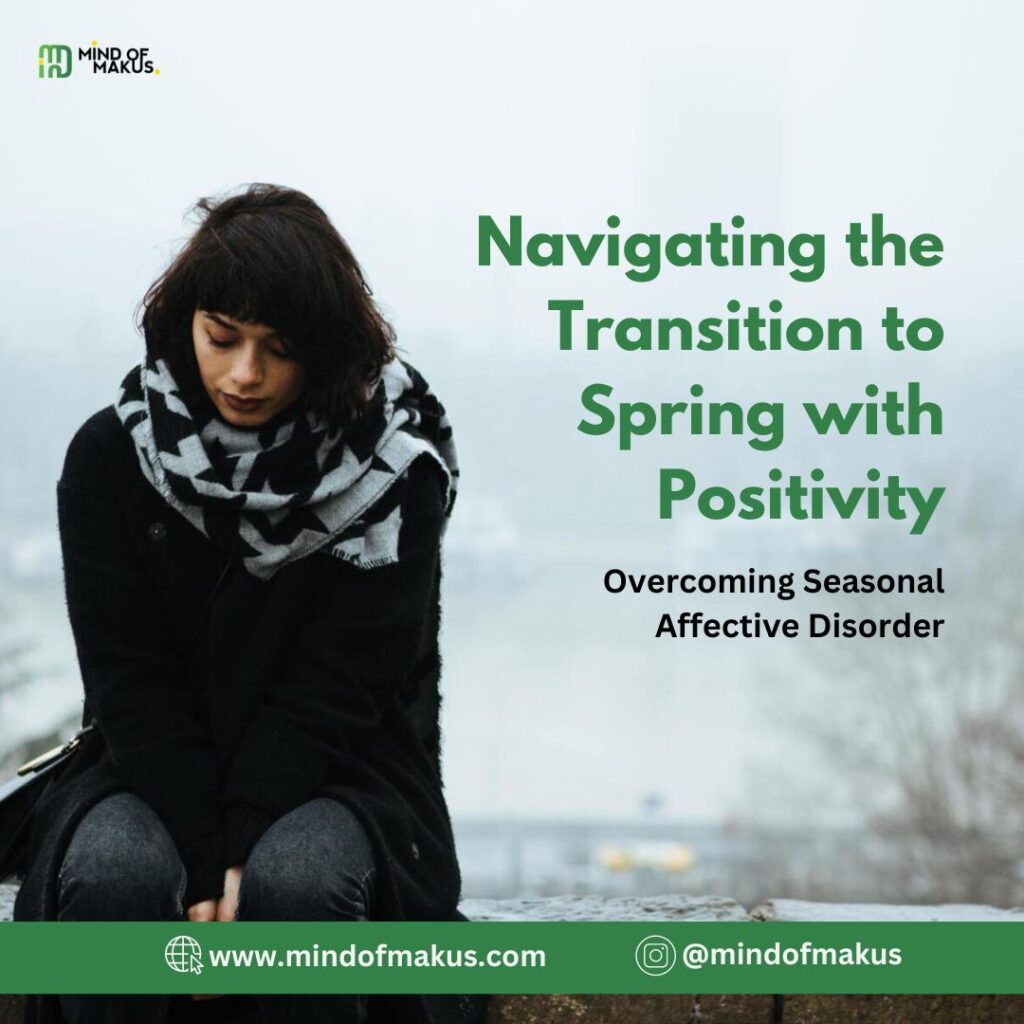Hello friend,
Welcome to another week of great experiences and impact. I am celebrating one year after a life saving surgery, and the victory Christ has won for me. I am enjoying every breath I take, it’s so much more meaningful. The love that was shown to me, the wisdom of the people that surrounded me, the joy we shared once I got out of my feelings about being on best rest. I am thankful.
What are you thankful for today?
Spring has sprung, I spent the last weekend doing a massive garden tidy up and i am excited for new planting. If you missed last week’s post, I discussed spring and the need to declutter your mind this season, click here to read it.


For some, the transition from winter to spring can be uplifting , the sun is out again, new energy comes into your soul. Particularly for those who experience Seasonal Affective Disorder (SAD). In this blog post, we’ll explore strategies for navigating the seasonal transition with positivity, resilience, and hope, even in the face of SAD.
Understanding Seasonal Affective Disorder:
Seasonal Affective Disorder, often abbreviated as SAD, is a type of mood disorder that occurs at a specific time of year, typically during the winter months when daylight hours are shorter, the sky is gray and not many outdoor activities are happening. Symptoms of SAD may include low mood, fatigue, changes in appetite or sleep patterns, and a loss of interest in activities once enjoyed.
While SAD is most commonly associated with winter, some individuals may also experience symptoms during the transition to spring, albeit less frequently.
Embracing the Light:
One of the hallmark symptoms of SAD is a decrease in exposure to natural sunlight during the winter months. As spring arrives and daylight hours increase, it’s essential to embrace the light and soak up its mood-boosting benefits.
Spend time outdoors whenever possible, even if it’s just a brief walk in the sunshine. Open your curtains and let natural light flood into your home.
By prioritizing exposure to sunlight, you can help regulate your body’s internal clock and alleviate symptoms of SAD. Sunlight exposure helps us produce vitamins D and it’s worth checking your vitamin D levels and taking some supplements if it’s low.
If you have outdoor space at home, spend time there, have a meal outside, a drink or just walk around your garden for 10mins.


Cultivating Gratitude:
Transitioning from winter to spring offers an opportunity to cultivate gratitude for the changing seasons and the promise of new beginnings.
Take time to appreciate the beauty of springtime blossoms, the fresh scent of rain, and the vibrant colors that emerge as nature awakens from its winter slumber. Walk/Dance in the rain.
Practice gratitude by keeping a journal and writing down three things you’re thankful for each day. By focusing on the positive aspects of spring, you can shift your perspective and cultivate a sense of optimism and hope.
Journal exercise: when you wake up, pick a number on a scale of 1-10 to signify how you feel. Write down why you chose that number. 1 being sad and 10 being happy.
Staying Connected:
Social isolation can exacerbate symptoms of depression, including SAD. As spring unfolds, make an effort to stay connected with loved ones and engage in meaningful social activities.
According to the Havard Gazette, Those who were more lonely were about 40 percent more likely to die over the next four years, while those who were socially isolated were about 75 percent more likely to die.
Reach out to friends or family members for a walk in the park, a picnic, or simply a heartfelt conversation over a cup of tea. Join community events or clubs that align with your interests and provide opportunities for social connection.
Someone asked on a Facebook group recently, how to make new friends. My response: go to places where people are doing what you like/are interested in, do those things together and enjoy it. Pick a different thing each month or week if you have time.
By nurturing your relationships and fostering a sense of belonging, you can combat feelings of loneliness and isolation.
Seeking Support:
If you find that your symptoms of SAD persist or worsen despite your efforts to stay positive, don’t hesitate to seek professional support.
Talk to your healthcare provider or a mental health professional who can offer guidance and support tailored to your individual needs.
Treatment options for SAD may include light therapy, counseling, medication, or a combination of approaches. Remember, reaching out for help is a courageous step towards healing and recovery.


While the transition from.one season to another may pose a challenge for some, it also presents an opportunity for growth, resilience, and hope. By embracing the light, cultivating gratitude, staying connected, and seeking support when needed, you can navigate this transition with positivity and grace. Remember, you are not alone in your journey, and brighter days lie ahead.
Wishing you strength, resilience, and hope as you navigate the transition to spring.
Until we meet again next week,
Stay authentic, Stay resilient,
Be yourself and keep getting better at it.
Live wholeheartedly,
Amaka
2 Cor 3:2(MSG)
You yourselves are all the endorsement we need. Your very lives are a letter that anyone can read by just looking at you. Christ himself wrote it—not with ink, but with God’s living Spirit; not chiseled into stone, but carved into human lives—and we publish it.

